M
I
C
R
O
S
T
O
R
Y
O
F
A
R
T
........................................................

NOW COMPLETED:

........................................................
MICROSTORY OF ART
ONLINE JOURNAL FOR ART, CONNOISSEURSHIP
AND CULTURAL JOURNALISM
........................................................
INDEX | PINBOARD | MICROSTORIES |
FEATURES | SPECIAL EDITIONS |
HISTORY AND THEORY OF ATTRIBUTION |
ETHNOGRAPHY OF CONNOISSEURSHIP |
SEARCH

........................................................



 >MICROSTORIES
>MICROSTORIES
- Richard Serra
- Martin Scorsese
- Claude Simon
- Sunshine
- Werner Herzog
- The Creation
- Marcel Duchamp
- Nino Rota
- Wölfflin and Woolf
- Hansjörg Schneider
- Kraftort Arkadien
- Visual Biography
- Schlaraffenleben
- Die Geisteswissenschaften
- The Voyeur
- Buzzword Sustainability
- Paul Verlaine
- Tao Yuanming
- New Beginning
- Seneca
- Still Lifes
- Charles Baudelaire
- Frédéric Chopin
- The Art History of Sustainability
- Wang Wei
- Solarpunk
- Historians of Light
- Lepanto
- Renaturalization
- Plates
- Snow in Provence
- Learning to See
- Picasso Dictionaries
- Peach Blossom Spring
- Picasso Tourism
- Tipping Points
- Sviatoslav Richter
- Weather Reports
- Treasure Hunt
- Another Snowscape in Picasso
- Picasso in 2023
- Dragon Veins
- The Gloomy Day
- The Art of the Pentimento
- Reforestation
- The Status of Painting
- Emergency Supply
- Punctuality
- Watching Traffic
- Zhong Kui
- How Painting Survived the 1990s
- Confirmation Bias
- Sustainability and Luxury
- Garage Bands
- Picasso and Artificial Intelligence
- Eyes of Tomorrow
- Picasso in 2023 2
- Gluing Oneself to Something
- Suburbia
- Bamboo
- Sustainability and Carpe Diem 1
- Interviews with Bruegel
- Sustainability and Carpe Diem 2
- Coffee & Sugar
- Bamboo 2
- Picasso in 2023 3
- Sustainability and Carpe Diem 3
- Cherry Orchard
- Old Magazines
- Chance
- Nick Drake
- Harlequin
- The Smartphone & the Art Book
- Atlas Syndrome
- The Kitchen
- Atlas Syndrome 2
- Consideration
- Tori Amos
- School
- Orchard Auctioning Day
- The Hundred Years’ War
- Sócrates
- Chameleon
- Nefertiti Bust
- Picasso as a Computer
- Sunflowers
- Philemon & Baucis
- Ode to the Radio
- Childhood
- Wimmelbild
- Restitution
- Nick Drake 2
- Wishful Thinking
- Sundays
- The Independent Scholar
- September
- The Fisherman by Pirosmani
- Microadventure
- Sociology
- Salvator Mundi
- Chillon
- Appassionata
- Amber
- Homer
- Berlin
- Planet Walk
- Improvisation
- Seeing Picasso
- These Nice Kids
- Robber
- The One
- The Sea Turtle
- Zoo
- Through the Hush
- Wunderkammer
- I Do Not Seek, I Find
- Shopping Mall
- Food Hamper
- The Secretary
- This Gate
- Nor Rainy Day
- House on a Hill
- Beautiful Island
- Second-hand Bookstore
- Flat
- Slap in the Face
- Serra, Wenkenpark
- Apologies
- The Bells
- Nordmann Fir
- Picasso Wanting To Be Poor
- Picasso, Pirosmani
- A Brief History of Sculpture
- 24 Sunsets
- Rusty Phoenix
- Glove
- Wintry Stanza
- A Song
- Like A Beatle
- Catching An Orange
- Solar Bees
- Permaculture

 >FEATURES
>FEATURES
- Van Gogh On Connoisseurship
- Two Museum’s Men
- Ende Pintrix and the City in Flames
- Titian, Leonardo and the Blue Hour
- The Man with the Golden Helmet: a documentation
- Un Jury d’admission à l’expertise
- Learning to See in Hitler’s Munich
- Leonardo da Vinci and Switzerland
- The Blue Hour Continued
- The Blue Hour in Louis Malle
- Kafka in the Blue Hour
- Blue Matisse
- Blue Hours of Hamburg and LA
- A Brief History of the Cranberry
- The Other Liberale in the House
- The Blue Hour in Raphael
- Who Did Invent the Blue Hour?
- Monet on Sustainability
- Velázquez and Sustainability
- The Blue Hour in Guillaume Apollinaire
- Van Gogh on Sustainability
- The Blue Hour in Marcel Proust
- Picasso and Sustainability
- The Contemporary Blue Hour
- The Blue Hour in 1492
- The Blue Hour in Hopper and Rothko
- Hopper and Sustainability
- The Blue Hour in Ecotopia
- The Hour Blue in Joan Mitchell
- Explaining the Twilight
- The Twilight of Thaw
- The Blue Hour in Pierre Bonnard
- Explaining the Twilight 2
- Picasso on Stalin
- Rubens on Sustainability
- The Salvator Mundi in Bruegel and Rubens
- The Blue Hour in Leonardo da Vinci and Poussin
- The Blue Hour in Rimbaud
- Faking the Dawn
- Frost and Thaw in Ilya Ehrenburg
- Picasso, Stalin, Beria
- Picasso, Solzhenitsyn and the Gulag
- Shostakovich on Picasso
- Hélène Parmelin in 1956
- Historians of Picasso Blue
- Picasso Travelling to Moscow 1
- The Blue Hour in Caravaggio
- Picasso Travelling to Moscow 2
- Picasso, the Knife Game and the Unsettling in Art
- Some Notes on Leonardo da Vinci and Slavery
- Picasso Moving to the Swiss Goldcoast
- The Blue Hour in Camus
- The Blue Hour in Symbolism and Surrealism
- Caspar David Friedrich in His Element
- Exhibiting the Northern Light
- Caspar David Friedrich in His Element 2
- Robert Schumann and the History of the Nocturne
- The Blue Hour in Robert Schumann
- Caspar David Friedrich and Sustainability
- The Twilight of Thaw 2
- Multicultural Twilight
- The Blue Hour in Anton Chekhov
- The Blue Hour in Medieval Art
- Twilight Photography
- The Blue Hour in Bob Dylan
- Iconography of Optimism

 >SPECIAL EDITIONS
>SPECIAL EDITIONS
- Visions of Cosmopolis
- Mona Lisa Landscapes
- Turner and Ruskin at Rheinfelden
- Painters On TV & On TV
- Spazzacamini in Art
- A Last Glance at Le Jardin de Daubigny
- The Experimental Cicerone
- A Dictionary of Imaginary Art Historical Works
- Iconography of Blogging
- Begegnung auf dem Münsterplatz
- Cecom
- Das Projekt Visual Apprenticeship
- Those Who See More
- A Fox on Seeing with the Heart
- Sammlung Werner Weisbach
- Daubigny Revisited
- Some Salvator Mundi Microstories
- Some Salvator Mundi Afterthougths
- Some Salvator Mundi Variations
- Some Salvator Mundi Revisions
- A Salvator Mundi Questionnaire
- A Salvator Mundi Puzzle
- Unknown Melzi
- Francis I and the Crown of Charlemagne
- From Amboise to Fontainebleau
- Drones Above Chambord
- Looking Back At Conques
- Flaubert At Fontainebleau
- Images of Imperial Ideology
- The Chronicles of Santa Maria delle Grazie
- Seeing Right Through Someone
- Melzi the Secretary
- Eying Glass
- A Foil to the Mona Lisa
- A Renaissance of the Cartoon
- Sketching a Family Tree
- Venetian Variations
- A Brief History of Digital Restoring
- A Consortium of Painters
- Leonardeschi and Landscape
- A Christ in Profile
- Learning to See in Spanish Milan
- A History of Gestures
- Leonardo and Josquin
- A Renaissance of the Hybrid
- Suida and Heydenreich
- The Watershed
- Three Veils
- From Beginning to End
- Connoisseurship of AI
- Twilight and Enlightenment
- The Blue Hour in Chinese Painting
- Dusk and Dawn at La Californie
- Iconography of Sustainability
- The Blue Hour in Goethe and Stendhal
- The Sky in Verlaine
- The Blue Hour in Paul Klee
- Iconography of Sustainability 2
- The Blue Hour in Charles Baudelaire
- From Bruegel to Solarpunk
- Some Salvator Mundi Documentaries
- Some More Salvator Mundi Monkey Business
- The Windsor Sleeve
- Brigitte Bardot’s Encounter with Picasso
- Art Historians and Historians
- A Salvator Mundi Chronicle
- The Salvator Mundi and the French Revolution
- The Fontainebleau Group
- The Encounter of Harry Truman with Pablo Picasso
- The Fontainebleau Group Continued
- The Windsor Sleeve Continued
- The Salvator Mundi in Early Netherlandish Painting 1
- Some Salvator Mundi Resources
- A New Salvator Mundi Questionnaire
- The Woman in Picasso
- The Yarborough Group
- Melzi, Figino and the Mona Lisa
- The Yarborough Group Continued
- A Salvator Mundi Global History
- The Salvator Mundi in Medieval Art
- The Salvator Mundi in Medieval Art 2
- The Salvator Mundi in Early Netherlandish Painting 2


 >HISTORY AND THEORY OF ATTRIBUTION
>HISTORY AND THEORY OF ATTRIBUTION
- The Mysterious »Donna Laura Minghetti-Leonardo«
- Assorted Demons of Connoisseurship
- Panofsky Meets Morelli
- Discovering the Eye of Sherlock Holmes
- Handling the Left-handed Hatchings Argument
- Visual History of Connoisseurship
- Alexander Perrig
- Connoisseurship in 2666
- What Postmodernity Has Done to Connoisseurship
- Dividing Four Fab Hands
- A Leonardesque Ambassador
- Test Cases in Connoisseurship
- A Raphael Expertise
- How to Tell Titian from Giorgione
- Louise Richter
- The Unique Property in the History of Connoisseurship
- An Expertise by Berenson
- The Book of Expertises
- An Album of Expertises
- An Expertise by Friedländer
- A Salvator Mundi Provenance
- How to Tell Leonardo from Luini
- An Expertise by Crowe and Cavalcaselle
- An Expertise by Bayersdorfer
- An Expertise by Hermann Voss
- An Expertise by Hofstede de Groot
- Leonardeschi Gold Rush
- An Unknown »Vermeer«
- An Expertise by Roberto Longhi
- An Expertise by Federico Zeri
- A Salvator Mundi Geography
- A Salvator Mundi Atlas
- The Bias of Superficiality
- 32 Ways of Looking at a Puzzle
- James Cahill versus Zhang Daqian
- Five Fallacies in Attribution
- On Why Art History Cannot Be Outsourced to Art Dealers
- On Why Artificial Intelligence Has No Place in Connoisseurship
- Salvator Mundi Scholarship in 2016
- Leonardo da Vinci at the Courts
- The Story of the Lost Axe
- The Last Bruegel
- A Titian Questionnaire
- On Where and Why the Salvator Mundi Authentication Did Fail
- The Problem of Deattribution

 >ETHNOGRAPHY OF CONNOISSEURSHIP
>ETHNOGRAPHY OF CONNOISSEURSHIP
MICROSTORY OF ART
ONLINE JOURNAL FOR ART, CONNOISSEURSHIP
AND CULTURAL JOURNALISM
........................................................

***
ARCHIVE AND FURTHER PROJECTS

1) PRINT


***
2) E-PRODUCTIONS


........................................................

........................................................

........................................................
FORTHCOMING:


***
3) VARIA

........................................................

........................................................

........................................................

........................................................

........................................................
***
THE GIOVANNI MORELLI MONOGRAPH

- The Giovanni Morelli Monograph
........................................................
MICROSTORY OF ART
ONLINE JOURNAL FOR ART, CONNOISSEURSHIP AND CULTURAL JOURNALISM
HOME
MICROSTORY OF ART ONLINE JOURNAL FOR ART, CONNOISSEURSHIP AND CULTURAL JOURNALISM A Brief History of Digital Restoring  |
See also the episodes 1 to 16 of our New Salvator Mundi History:
Francis I and the Crown of Charlemagne
The Chronicles of Santa Maria delle Grazie
And:
A Brief History of Digital Restoring
(22.8.2021) The 21st century is still young, but one innovation in the field of cultural heritage preservation can be
named: digital restoration. Which means that badly damaged cultural objects are being restored, but only virtually, and
only recent developments in the two fields of high quality digital image production and digital image processing have
made this possible.
The Salvator Mundi saga, in the year of 2021, is ten years old, and only very recently we have seen the first attempt to
go back to the basics (which means here: the cleaned state of Salvator Mundi version Cook) and to restore it digitally.
By a citizen of the 21st century, a digital citizen, named Art vs. Machine (Eric Wayne), and I have watched his
entertaining and highly interesting clip – it is more than two hours long – very carefully.
And very recently I felt like doing some digital restoring myself. And no, I am not going to compete with Art vs
Machine, I am not going to digitally restore version Cook, and I am not familiar with Photoshop anyway (actually I
don’t even have it on my computer). What I am going to do in this seventeenth episode of our New Salvator Mundi History
is to muse a little about digital restoring, its history and its potential. I am going to pay critical respect to Art
vs Machine and to this first and unique attempt in digital restoration. And yes, I am going to restore a little known
Leonardo sheet myself, using a totally different, but also interesting approach. And all this is meant to lead to some
conclusions, given below (picture in title: nga.gov).
One) Digitalization and Social Change
I am old enough to recall a time (let’s say: the 1990s), when the expert was still the expert, the gatekeeper still the
gatekeeper, and, as one may add, the traditional restorer still the restorer, here: the embodiment of the restorer. But
times have changed. A large part of the social change I yet have witnessed during my lifetime is due to digitalization.
We have seen a dramatic fragmentation of the public sphere, we now have millions of experts instead of just a few,
gatekeepers are largely out of work (while a few seem to be still active here and there), and the tools of digital
restoration have been added to the traditional tools of restoration (picture above: theconservationcenter.com).
Why am I naming the strange profession of gatekeeper here? Because once this was a crucial function within the social and
public space of the academe and the social space of the public and its media in general. The function of the gatekeeper
was to curate content and to make sure that only high quality academic papers were published in academic media, and as
far the public in general was concerned, that the amount of rubbish, to be published in the public sphere and its media,
was kept to a minimum. But all this has changed. And not only to the worse.
Not only to the worse, but of course also: not only to the good. In the social world of Leonardo business the whole
ambiguity of social change due to digitalization does show and can be observed: we have experts (still used to
pre-digitalization social roles, hierarchical roles) being confronted with alternative views. Having worked my way
through the history of Leonardo studies several years ago, I dare to say: this is also to the good – since Leonardo
studies have always produced a large amount of rubbish. Actually the history of Leonardo studies is so full of rubbish
that it is actually understandable that few Leonardo scholars are interested in the history of their own field, but
still: a sense of history, here: an awareness of the amount of rubbish having been produced over one century and a half
of Leonardo business would help to maintain quality. Instead we see confusion and chaos. And I am not willing to give
academic Leonardo studies of today much credit. The quality of what has been produced during the Salvator Mundi
controversy is a total disgrace, and many journalists and outsiders have contributed better work than the so-called
leading scholars. So here: digitalization, including democratization by digitalization, can actually be a good thing.
But of course only as far as better quality does correct a minor one (we will come to that below).
Two) Technological Progress: Image Production and Image Processing Tools
Traditional restorers are used to remove varnish from pictures, and while hardly anyone would dare to remove varnish
from the real Louvre Mona Lisa, this can digitally be accomplished (picture series above: lumiere-technology.com),
and original colors or supposedly original color schemes can be simulated and be discussed without doing any harm to the
most iconic picture of all iconic pictures.
We have to be aware that two trajectories cross here: the history of digital image processing (the history of the
Adobe Photoshop software begins in 1988) crosses with the history of innovative production of high quality digital images,
and this history is certainly embodied by Pascal Cotte of Lumiere Technology who invented a camera that allows to do
scans of paintings in unimaginably high resolution and color nuance. And while the technical innovation is one thing,
its applications have to be in our focus here: general diagnostics might be one kind of application, but the field is not
limited to diagnostics and contemplation. Contemplation might lead to new insights, and insights to new activities,
including activities in the field of digital restoration. In fact: also Lumiere Technology has begun to recommend
digital restoration as a possible application of its technology. And it is hardly surprising that Lumiere Technology
has been very active in the field of Leonardo studies. In fact a collaboration with the Louvre led to a Louvre
publication on the Mona Lisa in 2006, and own publications of Lumiere Technology did follow years later. The firm
did also investigate the Salvator Mundi version Ganay, but one has to mention now that, currently, as it does appear,
Pascal Cotte and the Louvre are in legal dispute over some copyright issues (as it has been reported).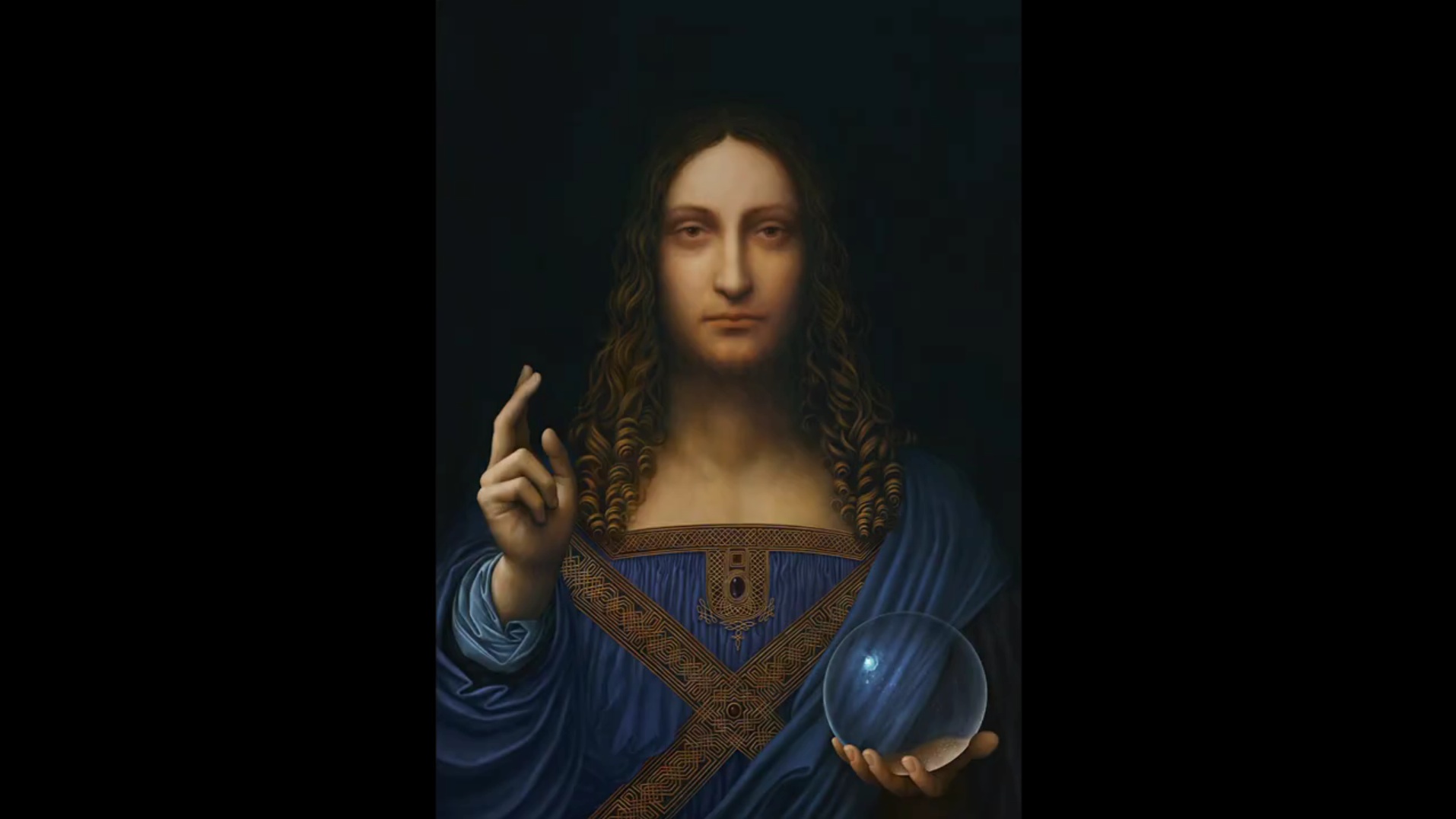
Three) Entertainment versus Quiet Contemplation
The digital restoration of Salvator Mundi version Cook by Art vs Machine, as said above, is a present to the tenth
birthday of the Salvator Mundi saga. It is the first such (rather serious) attempt, and it raises several questions:
one might ask why the owners of the Salvator Mundi had it restored at all, if, around the year of 2005, the possibility
of digital (virtual) restoring appeared at least on the horizon. Be it as it may: but in 2021 it would sound rather
hypocritical to say that restoration was done, because this seemed to be the best for the picture. Because one might
answer: the best would have been to hand it over, after cleaning, to the study collection of the Metropolitan Museum
while further attempting to restore it – digitally (picture above: Art vs Machine/youtube.com).
I am not commenting on the result of what Art vs Machine did attempt as far as the actual restoration is concerned.
What strikes me is that the clip by Art vs Machine is also meant to be entertaining, and it is. I particularly like
the ›autograph backyard barbecue‹ episode at 1:35. The clip is entertaining, and I am still able to follow and also to
appreciate its visual style and rhythm (while I am pretty sure that anyone who is not a digital native will find it
confusing and rather nerve-wrecking). It is crucial to say that the long hours of comteplative work with Photoshop are
not part of the clip which is rather dedicated to a kind of lecture or discussion and a presentation of results.
But also the results are worth to be discussed, just because this is experimental avantgarde of the 21st century. If
still one comment might be allowed, I would say that one kind of premise of Art vs Machine is to suppose a once
superb painting while looking at the cleaned state version, and I have never been really convinced of that ›premise‹,
which to me rather seems to be a projection after much rumor about a supposed ›Lost Leonardo‹ had already been produced.
And even one of the buyers has conceded that the best part of the picture is actually the blessing hand. To draw a
conclusion that also the rest of the picture must once have been superb is a problematic one (as also the real
restoration process was rife with problems), and thus, to me, Art vs Machine, seems to be somewhat overcritical as to
the work of the real restorer (who, in my view, did not ruin a once superb picture or painted it more or less anew,
although certain ›additions‹ seem to be very problematic to me also, because such were also done on the premise of,
again, problematic premises).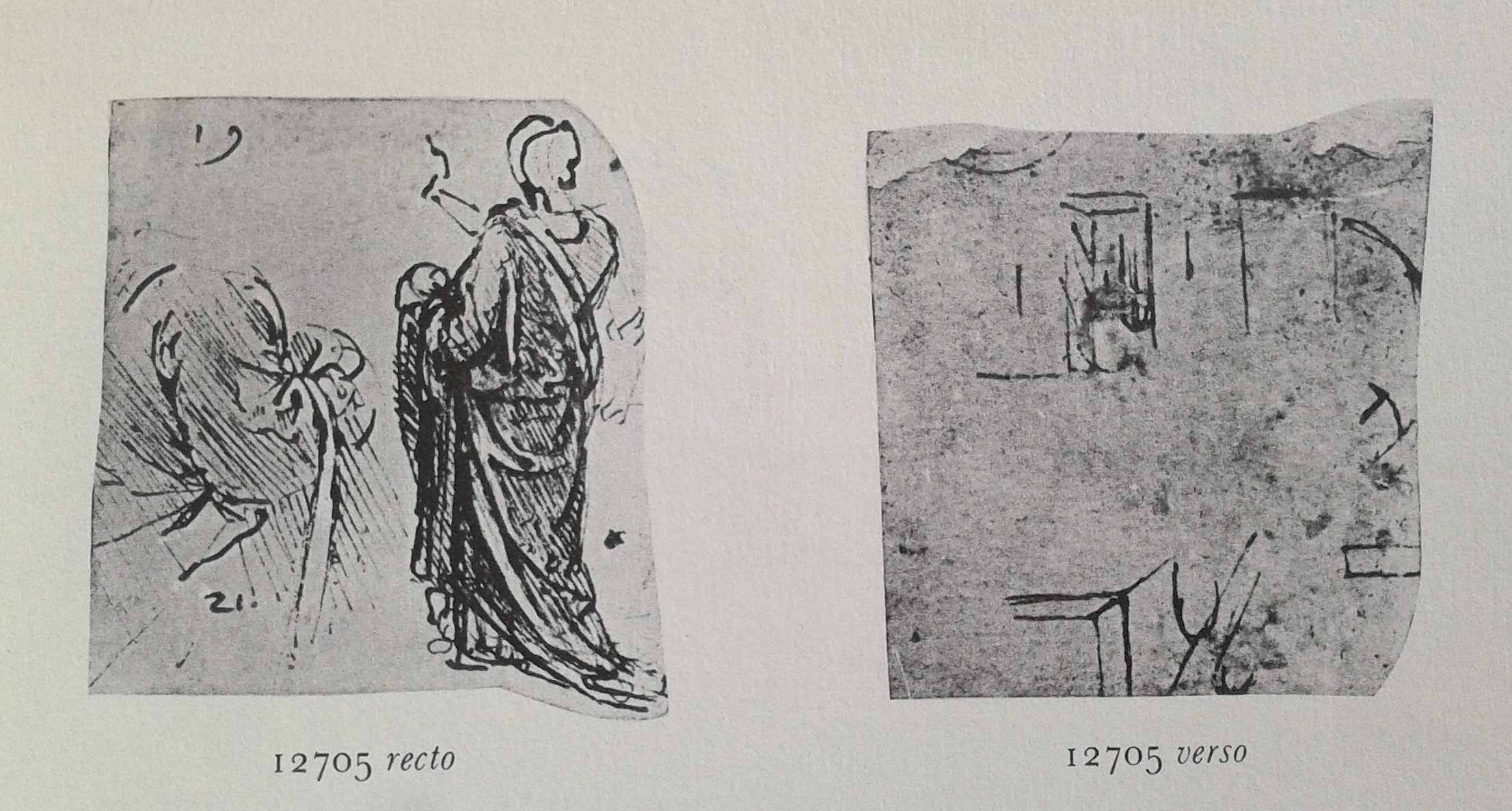
Four) Boltraffio, Leonardo and Marco in the Countryside?
Here comes now my modest own attempt in digital restoration. And this is about a little known drawing on one of the small
Windsor sheets. These sheets have been cut out from so-called ›parent sheets‹, and my aim, along with proposing a
certain hypothesis, is (or was) to simply place the drawing anew into the parent sheet (a sheet from the so-called Codex
Atlanticus). My hypothesis is that Leonardo did that drawing while the woman who modelled for that drawing actually posed
for Giovan Antonion Boltraffio who, later, used his drawings for his 1502 painting of Saint Barbara (below).
Thus, in combining these materials (and also including a Saint Barbara painting by Marco d’Oggiono) we might discuss if,
in all this, we have evidence of these three being together with a model, perhaps in the countryside, where the female
model posed as the saint, and was drawn in frontal pose by Boltraffio, while she was drawn by Leonardo from another
angle (picture below on the right: Dguendel).
During that process of attempted digital restoring I did learn a lot: first of all I must say that I did not complete the
process, since it did seem to me that the Windsor fragment does not actually fit into the alleged ›parent sheet‹ from the
Codex Atlanticus. I am afraid to say so, but I have to question the claim that Windsor 12705 comes from Codex Atlanticus
366 (old numbering). This does not seem to affect the dating, and Kenneth Clark (with Carlo Pedretti) has assembled
interesting informations in his edition of the Windsor sheets. For example another drawing in Ms. L can be related to the
drawing on Windsor 12705. And all in all: the attempt in digital restoring was worth attempting it. It is the learning
process, not the actual result, that might stimulate further attempts, perhaps based on that learning.
Five) Conclusions
1) While I would not regret if most heavy-weighted exhibition catalogues would be replaced by high resolution
pdf-documents, I am certainly not hoping that digital restoration might now replace traditional restoration; digital
restoration is establishing as an additional, partly experimental tool that might stimulate future intellectual progress
in many fields, and it is to be hoped that it will further establish as such tool;
2) In some cases, however, it might have been better, seen retrospectively, if only digital restoration had been applied
and fostered intellectual progress only, because in the case of the Salvator Mundi version Cook, a process of restoration
has become part of a struggle of power of definition; and the actual process of restoration had never been free from such
struggle, due to this process having been based on particular premises and having been instigated due to particular
interests;
3) For those people still caring for intellectual quality in an age of fragmented public spheres, the criteria of
intellectual excellence become even more crucial than ever. Be it on Twitter or in an academic symposium – it is about an
awareness for the methods of knowledge-production and its problems; it goes without saying that ›knowledge‹ – here – must
mean ›best knowledge‹, a knowledge that can stand any kind of criticism; a sense of history always fosters such awareness
of how good knowledge can be produced and preserved, since history preserves also the memory of the errors of the past
(including the how and why they had been committed, also in the field of Leonardo studies); if on Twitter a sense of
history and such awareness for method and the problems of knowledge-production do show, while in an academic symposium
they do not – Twitter had to be preferred as the sphere of knowledge-production.

The Bottega of Leonardo da Vinci
The picture of the bottega of Leonardo da Vinci is not as blurred as one might imagine (for details see Seidlitz 1935, p. 530; Marani 1998). We will focus here on the early and middle years (up to 1512), and not on the late years, and one might begin with saying that with Boltraffio and Marco d’Oggiono we see two figures enter the orbit of Leonardo at the beginning of the 1490s that we believe to know rather well. We also see Salaì enter the orbit, at a very young age, and we have, in addition to that, a couple of names, names of figures that we do not seem to know very well, or not at all (a Giacomo, Giulio Tedesco, Galeazzo). Last but not least we have the Giampietrino problem: Giampietrino enters the scenery, but it is a matter of controversy (as far as this question is debated at all), when, since also Giampietrino is still very young.
It is noteworthy that Marco d’Oggiono, already at the end of the 1480s, seems to have had an own apprentice, and that Marco and Boltraffio did create the Pala Grifi together (a picture today in Berlin; picture above), even before Leonardo began to work at The Last Supper in 1495. Due to the work of Janice Shell and Grazioso Sironi we today do know more about Francesco Galli, also called Francesco Napoletano, who did die in Venice as early as 1501. One might imagine that Galli went to Venice with Leonardo in 1501, and if Galli, during the 1490s, for example might have cooperated with Marco, we would have found an interesting perspective: since, if only one single picture of the Marco group would be associated with Francesco Galli/Francesco Napoletano, we would have a picture with hand option 2, a picture that must have been created before Galli died in 1501. Which would mean that hand option 2 must have existed early, and my theory of the pentimento in version Cook as a mere switching from (preexisting) option 1 to (preexisting) option 2 would be positively proven as well as the theory of the pentimento supposedly showing the creative energy of genius (changing his mind) would be definitively falsified.
Brief: in the 1490s Leonardo mentions once that he had paid ›two masters‹ (probably Marco and Boltraffio) for two years; and once that he had six bocche to feed (probably again Marco, Boltraffio, plus Salaì and some of the unknowns).
Below a rather early Marco picture (according to Janice Shell), the Young Christ Blessing of the Galleria Borghese:
And here is a picture (not the only known picture) by Protasio Crivelli, formerly the apprentice of Marco d’Oggiono (picture by Sailko; the date appears to be 1498; location: Naples, Museo di Capodimonte):
In 1501 (3.4.) Pietro da Novellara informs Isabella d’Este that Leonardo seems to live ›from day to day‹ (see Marani 1998, p. 14). And he has seen Leonardo intervening from time to time in portraits done by two of his garzoni (»fano retrati«). But who are these, and which portraits are these (if this would have been about a Isabella d’Este portrait, Pietro would have noted; and after the Sforza had been expelled, portraits of court ladies and courtiers made no sense)? After having written on the picture of a young woman in the Columbia Museum of Art in one of the last episodes, I would now suggest the following:
Leonardo might have done a portrait of a Sforza court lady in the early Milanese years (and still in the Florentine portrait style), a portrait in terms of a drawing or a cartoon. He might have begun also a painting, but since the Sforza court got expelled and exiled after the French invasion, he might not have finished such portrait. He might instead have used it for the instruction of his garzoni: the Columbia picture might have been the one begun by Leonardo (as he seems to have begun portraits with the face, as later in the Mona Lisa), a picture that he might have had a pupil finish, with him retouching it again, adding some lustre. The picture in a private Russian collection might be a second version that he had a pupil repeat (after the first version and the drawing, respectively the cartoon). The Columbia picture shows much gusto for the grotesque, the second version less so, but still to some degree. Thus we would see pictures that have their origins in the first Milanese period (and even in the early Florentine period), but were actually done later (after 1500). And Leonardo might have had a hand in the Columbia picture whose head with the hair as well as the ornated hair net superbly being modelled into the dark is of exquisite quality (as also a single one pearl is, while other pearls are rather mediocre as also the bust and the modelling of the dress is). We see, as I have attempted to show in episode 13, two pictures that fit into the context of Leonardo’s thinking and doing rather than into the context of Boltraffio’s autonomous work: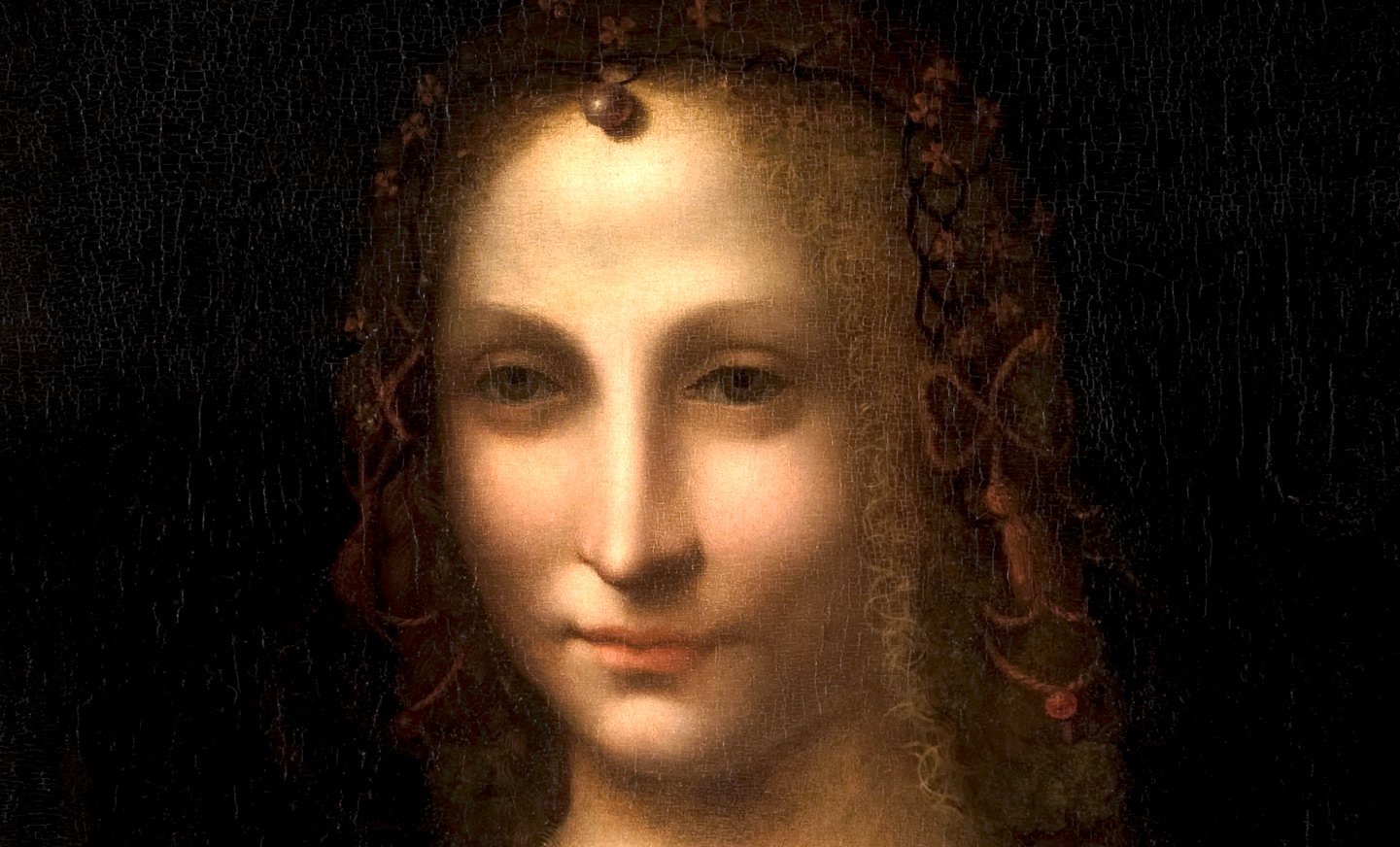
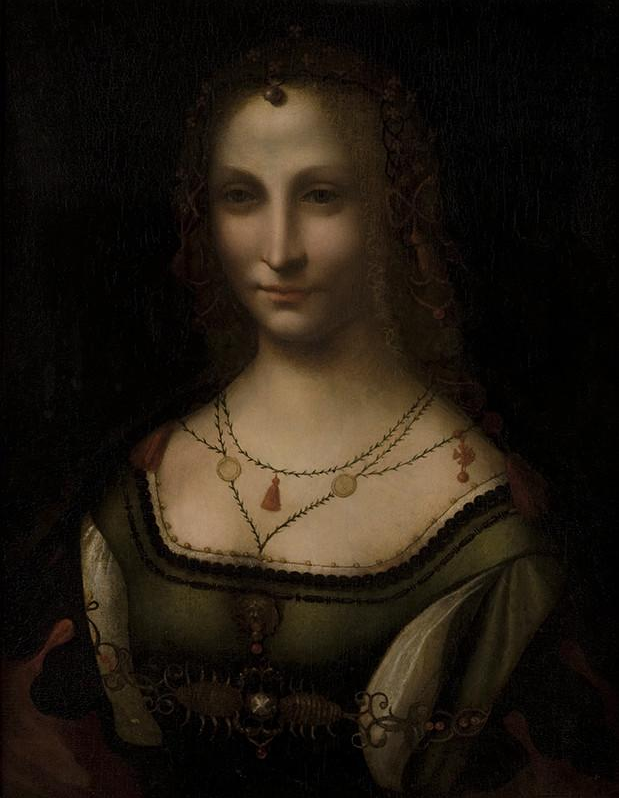
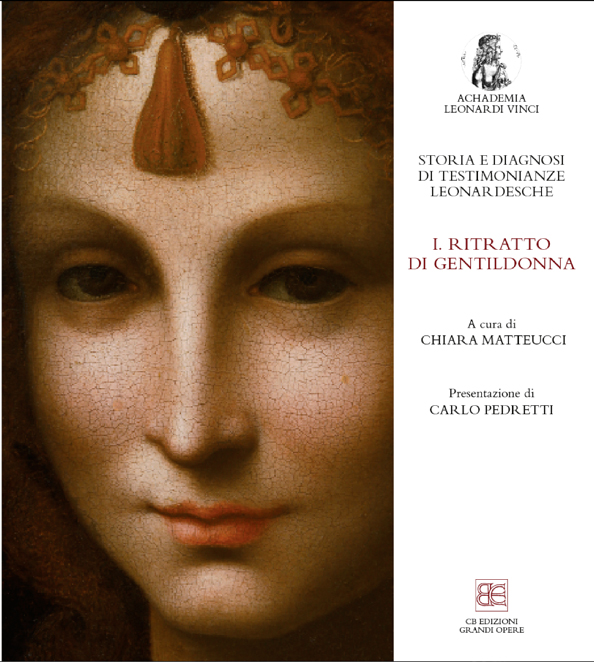
In 1504 a Jacopo Tedesco, in 1505 a Lorenzo (di Marcho) enter the orbit of Leonardo.
In around 1505 Fernando Yáñez enters the orbit of Leonardo, helping him with the Battle of Anghiari (as also does Riccio della Porta). Yáñez cannot be the author of the Prado Mona Lisa, if the Louvre Mona Lisa was finished only years later, since the dates (showing that Yáñez was active in Spain after 1506) do not allow to postulate it. In works of Yáñez done in Spain, however, we find echoes of Leonardo’s works (see the example below).
Around 1507 Francesco Melzi becomes a pupil of Leonardo (and also a sort of secretary).
In 1511 (or even earlier) Giampietrino is an autonomous master.
In 1511 Salaì seems to have created a (signed and dated) picture of Christ:
In around 1511 we see Marco, Boltraffio, Giampietrino and – Giovanni Agostino da Lodi in close contact, not only because we have a source indicating exactly that – we also have pictures indicating exactly that, and one of these pictures seems to be even dated (but the ›date‹ – ›XII‹ – is rather referring to the ›age of Christ‹):
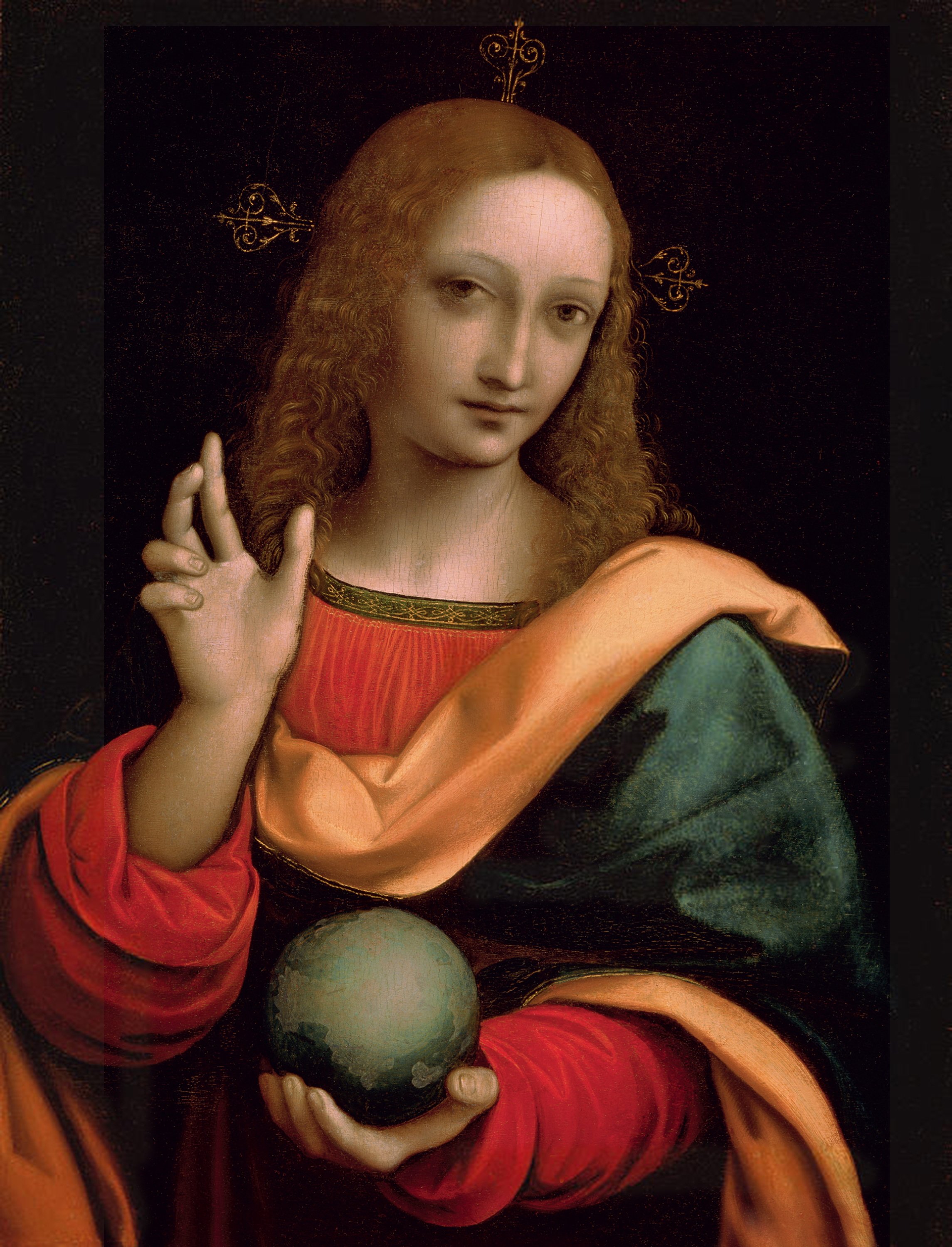
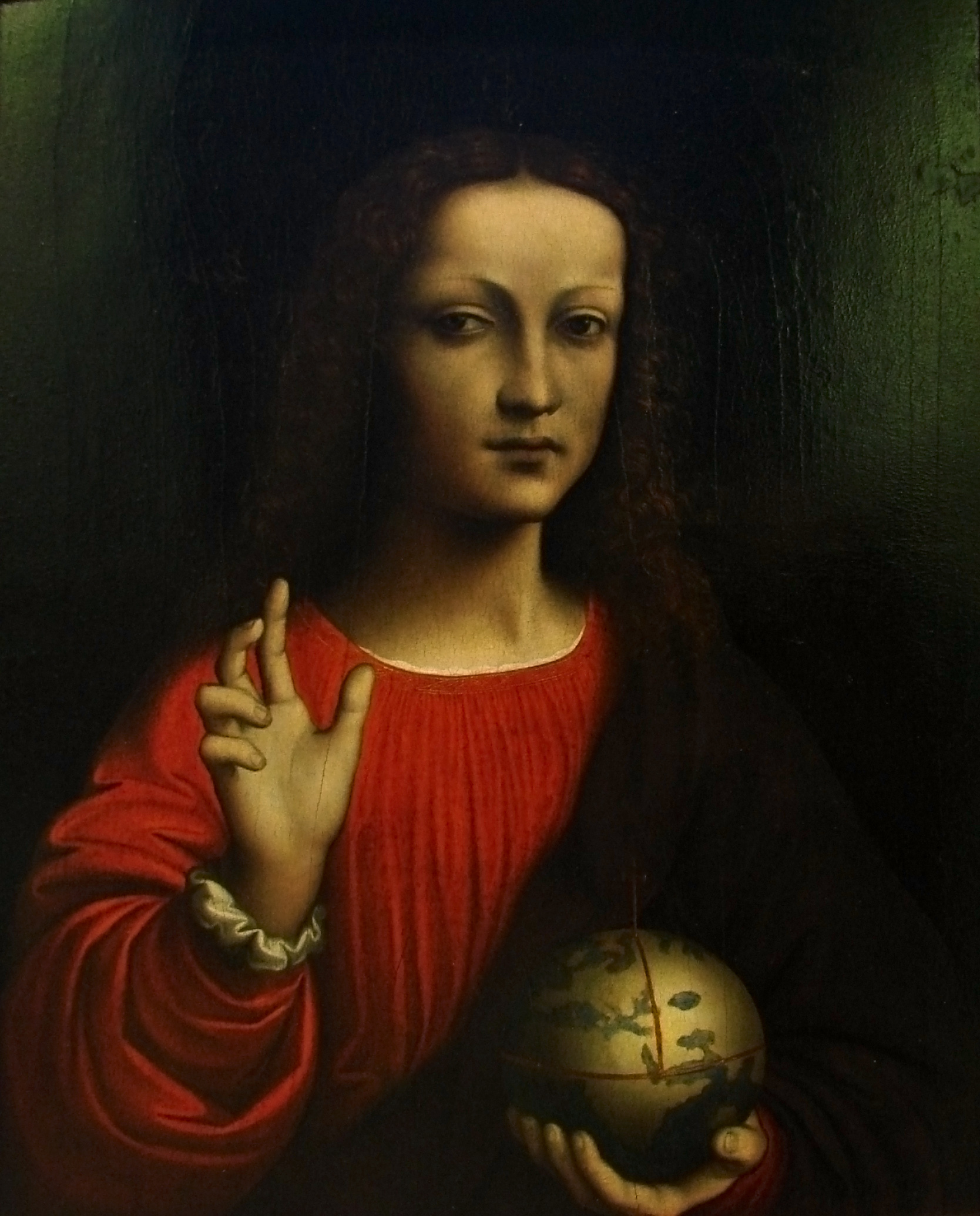
The Prado Mona Lisa (below) was probably begun at the time Leonardo also started reworking or completing the Louvre Mona Lisa, probably due to Giuliano de’ Medici wishing so, and hence perhaps in around 1511/12.
In around 1517 Marco d’Oggiono is cooperating with Giovanni Agostino da Lodi (see Shell, p. 173).
***
1516: Paolo Emilio, Italian-born humanist at the court of Francis I, publishes the first four books of his history of the Franks; death of Boltraffio.
1517: Leonardo da Vinci, with Boltraffio and Salaì, has come to France (picture of Clos Lucé: Manfred Heyde); 10.10.2017: Antonio de Beatis at Clos Lucé
1517ff: Age of the Reformation; apocalyptic moods; Marguerite of Navarre, sister of Francis I, will be sympathizing with the reform movement; her daughter Jeanne d’Albret, mother of future king Henry IV, is going to become a Calvinist leader.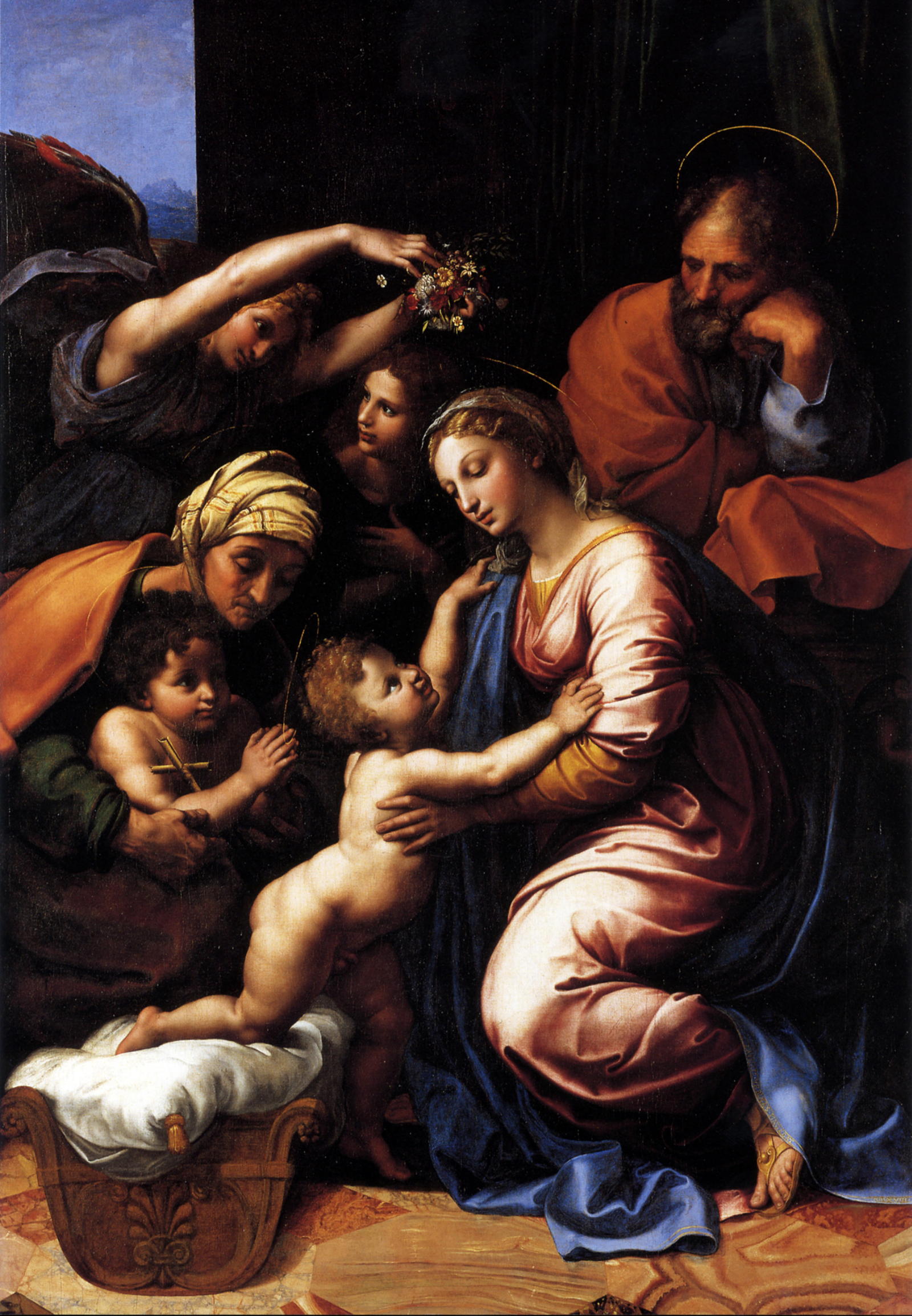
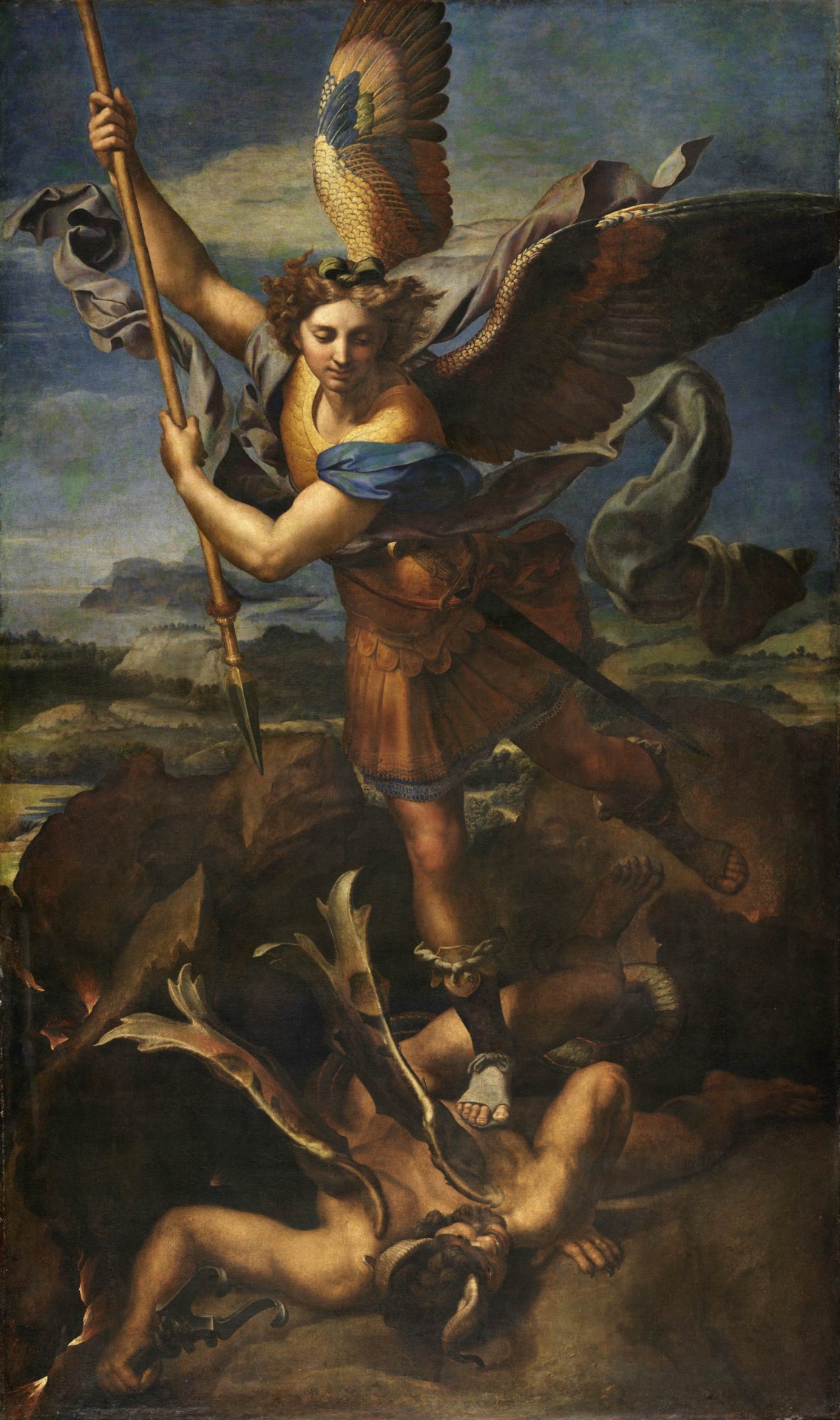
1518: the Raphael workshop produces/chooses paintings to be sent to France; 28.2.: the Dauphin is born; 13.6.: a Milanese document refers to Salaì and the French king Francis I, having been in touch as to a transaction involving very expensive paintings: one does assume that prior to this date Francis I had acquired originals by Leonardo da Vinci; 19.6.: to thank his royal hosts Leonardo organizes a festivity at Clos Lucé.
1519: death of emperor Maximilian I; Paolo Emilio publishes two further books of his history of the Franks; death of Leonardo da Vinci; Francis I is striving for the imperial crown, but in vain; Louise of Savoy comments upon the election of Charles, duke of Burgundy, who thus is becoming emperor Charles V (painting by Rubens).
1521: Francis I, who will be at war with Hapsburg 1526-29, 1536-38 and 1542-44, is virtually bancrupt.
1523: death of Cesare da Sesto.
1524: 19.1.: death of Salaì after a brawl with French soldiers at Milan.
1525: 23./24.2.: desaster of Francis I at Pavia. 21.4.1525: date of a post-mortem inventory of Salaì’s belongings.
1528: Marguerite of Navarre gives birth to Jeanne d’Albret (1528-1572) who, in 1553, will give birth to Henry, future French king Henry IV.
1530: Francis I marries a sister of emperor Charles V.
1531: death of Louise of Savoy; the plague at Fontainebleau.
1534: Affair of the Placards.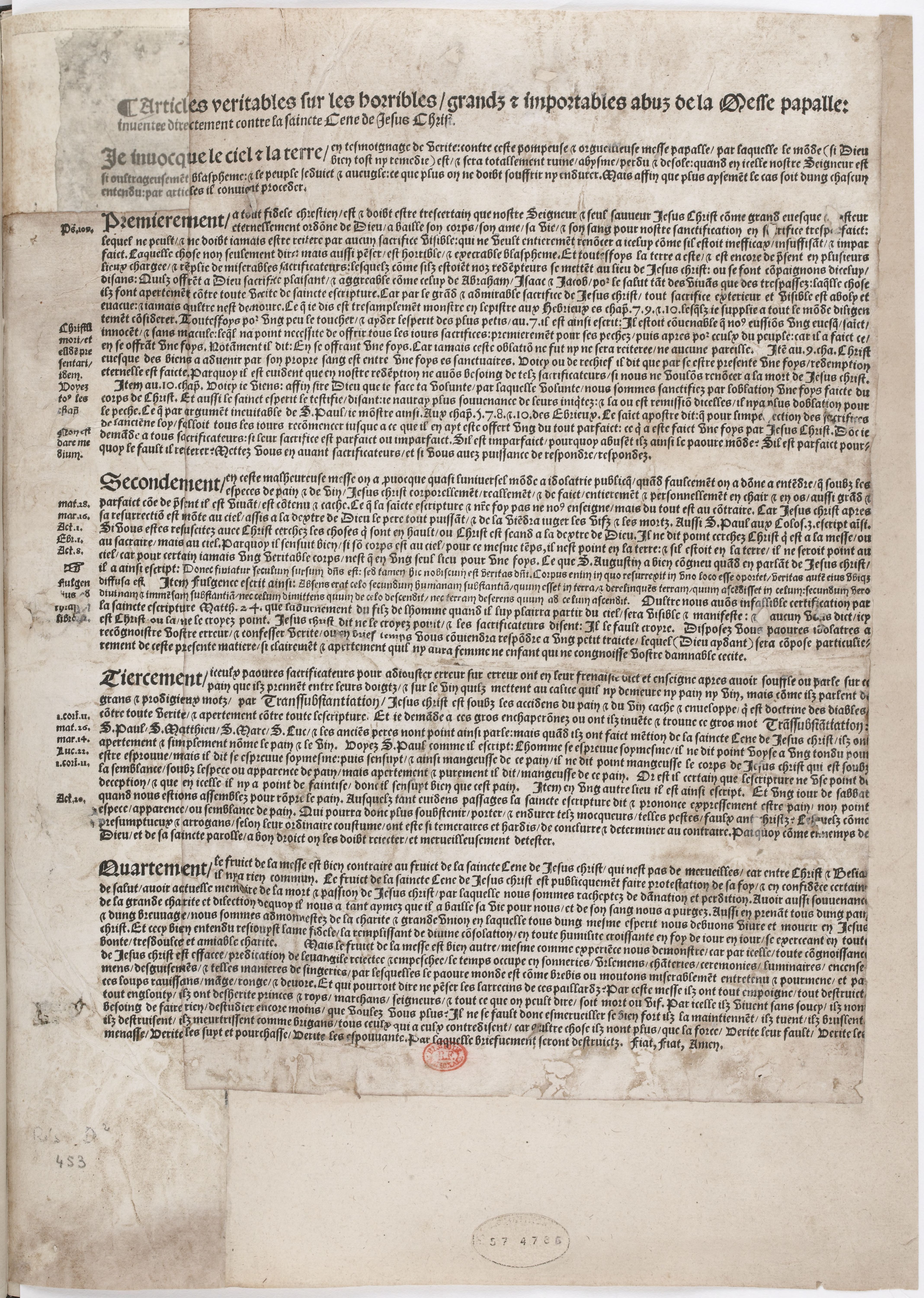
1539: the still unfinished chateau of Chambord is being shown by Francis I to Charles V.
1540s: the picture collection of Francis I being arranged at Fontainebleau.
1544: January: Marguerite of Navarre sends a letter of appreciation to her brother, king Francis I., who has sent her a crucifix, accompanied by a ballade, as a new year’s gift.
1547: death of Francis I.
1549: death of Marguerite de Navarre; death of Giampietrino.
1553: Jeanne d’Albret gives birth to Henry, the future French king Henry IV and first Bourbon king after the rule of the House of Valois.
1559: publication of the Heptaméron by Marguerite de Navarre.
1562-1598: French Wars of Religion.
1570: death of Francesco Melzi.
1589: Henry, grandson of Marguerite de Navarre and grand-grandson of Louise of Savoy, but by paternal descent a Bourbon, is becoming French king as Henry IV.
2015: an exhibition at the Château of Loches is dedicated to the 1539 meeting of king and emperor (see here).

Giampietrino’s Kneeling Leda is just another example of a painting having been created on the basis of a cartoon (see Leonardo biography by Charles Nicholl, German edition, p. 541)
See also the episodes 1 to 16 of our New Salvator Mundi History:
Francis I and the Crown of Charlemagne
The Chronicles of Santa Maria delle Grazie
And:
MICROSTORY OF ART
ONLINE JOURNAL FOR ART, CONNOISSEURSHIP AND CULTURAL JOURNALISM
HOME
© DS